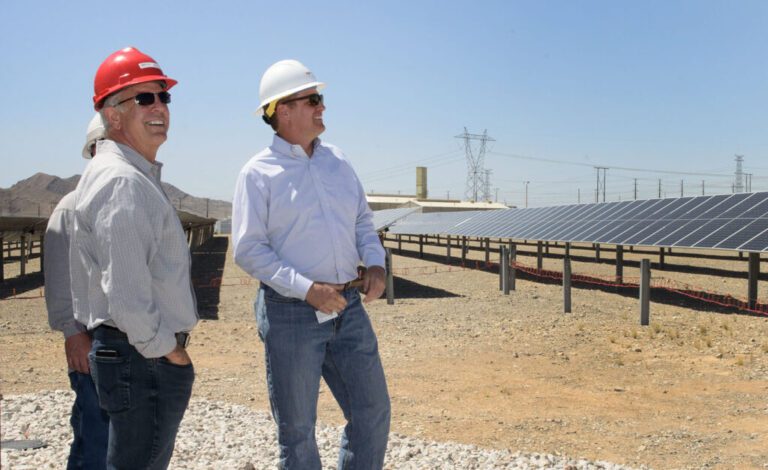NV Energy’s Renewable Landscape: Progress and Challenges Ahead
In recent developments, NV Energy has taken significant steps toward reducing its carbon footprint and aligning with Nevada’s ambitious objective of generating half of its electricity from renewable sources by 2030. As outlined in the utility’s latest annual report regarding compliance with the Renewable Portfolio Standard (RPS), conditions in the state have prompted both praise and skepticism from various stakeholders.
Renewable Energy Progress
According to NV Energy’s report, the utility achieved a remarkable 47% of its 2024 electricity sales from renewable sources, surpassing the 34% RPS requirement for that year. This accomplishment is an essential stride towards the forthcoming 50% target set for 2030. “These renewable resources provide a fuel-free energy source reducing customer energy costs and also eliminate carbon emissions to help improve the environment,” a representative noted in the official release.
Criticism and Concerns
Despite these seemingly positive developments, critics express concerns regarding the authenticity of NV Energy’s reported figures. Allegations point towards legislative loopholes that allow the utility to count renewable energy credits. These credits were instituted to ease transitions away from fossil fuels but have raised questions about accountability. In an absence of these credits, it appears only 29% of NV Energy’s electricity was generated from renewable sources in the previous year, which falls short of the mandated RPS.
Ernest Figueroa, Nevada’s Consumer Advocate, has raised flags in filings with the Public Utilities Commission, suggesting that NV Energy may misrepresent its renewable energy percentages due to aging accounting practices. He stated, “It is the statutory and regulatory loopholes in the accounting for Nevada PECs (Portfolio Energy Credits) that allow the utilities to claim much higher percentages of PEC compliance.”
Future Challenges
As NV Energy moves towards its 2030 goal, challenges loom large. Jimmy Daghlian, a vice president of renewable energy at NV Energy, acknowledged in 2023 that meeting the 50% goal would be “a challenge.” Increasing costs for battery storage and solar panels have been problematic, with prices reportedly escalating significantly in recent years.
Despite achieving compliance on paper, Nevada Conservation League Executive Director Kristee Watson asserted that NV Energy’s reliance on older credits and accounting tactics diminishes the actual renewable energy delivered to customers. “NV Energy is doubling down on fossil fuels by building new gas plants, which undermines the cost savings, economic benefits, and public health improvements Nevadans should be seeing,” Watson commented.
Energy Credits and Regulatory Changes
Notably, changes in regulations have made it impossible for NV Energy to use energy efficiency savings to meet its RPS requirements. However, three types of credits remain accessible to demonstrate compliance:
- Behind-the-meter credits: Generated by individual customers, such as those with rooftop solar installations.
- Station Usage credits: Account for energy consumption at certain geothermal facilities.
- Solar multipliers: Provide additional credit for photovoltaic systems installed before 2016.
Infrastructure Development and External Factors
The state’s renewable energy infrastructure is evolving, with projects like the Gemini solar facility and the Dry Lake Solar project significantly contributing to the goal. However, with the rising costs of materials—such as solar panels—due to tariffs and international trade policies, further complications may arise. For example, the Greenlink project, designed to transport renewable energy, has seen its budget balloon from approximately $2.5 billion to over $4 billion.
Global Comparisons and Local Implications
Interestingly, regional developments in renewable energy are not without global implications. A recent blackout in Spain, which ran entirely on renewable energy for the first time on a weekday, has brought forth questions about grid stability amid a rapid shift towards renewables. Observers like Fred Voltz caution against complacency, stating, “Neither the purchase of renewable credits nor the actual solar projects NVE spends ratepayers’ money on to satisfy the government-fabricated market for renewable energy will change the need for conventional generating capacity.”
Conclusion
As NV Energy continues its commitment toward renewable energy, ongoing scrutiny and evolving regulations will shape its path forward. Balancing ambitious renewable targets with practical challenges remains crucial for the future energy landscape in Nevada.


